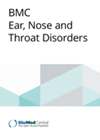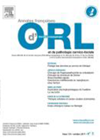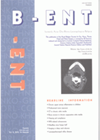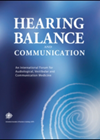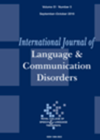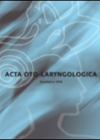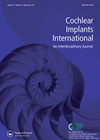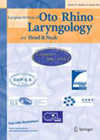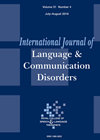
Journal Reviews
Literature review of experience with the BAHA Attract implant
The authors undertook a literature review for reports on patients who underwent BAHA Attract implantation. Of the 497 PubMed articles, 10 studies met their inclusion criteria. All the studies published were observational studies. There were no randomised control trials. The...
CI and CP
Quality of life improvement is one of the main goals of cochlear implantation. Mobile phones are now a standard daily tool. For many implanted patients, a mobile phone is used for sending short messages rather than for voice calls. This...
Predicting speech recognition in adults with cochlear implants
This was a combined prospective and retrospective study from Belgium that looked at factors influencing speech recognition scores in quiet conditions (retrospectively) and speech reception threshold levels (SRT) in fixed noise conditions (prospectively) after cochlear implantation in postlingually deaf adults....
Cochlear microphonics in children
Cochlear microphonics (CM) are generated mainly from outer hair cells and are routinely tested in children with hearing loss in some parts of the world. In this retrospective study, the aim was to compare the cochlear microphonics features (mainly CM...
Comparison of linguistic profiles in three groups of children with hearing loss and specific language impairment
Spoken language deficits in children with hearing loss early in life are attributed to auditory speech perception limitations. It is assumed that hearing following cochlear implants (CIs) will improve these language deficits. However, the studies have shown that although cochlear...
Is bone cement a cost-effective solution?
This study looks at the functional results of 52 patients who underwent bone cement ossiculoplasty. Patients were divided into four groups based on ossicular disruption. Group 1 (30 patients) had lenticular erosion only. Group 2 (13 patients) had absent incus....
A new modified double-flap technique for cochlear implant surgery
The authors retrospectively assessed 342 implantees with a minimum of five years’ follow-up who had been implanted using a lazy S-shaped post auricular incision with a modified double-flap technique. From the notes, postoperative wound complications and any other adverse events...
Which factors affect music involvement in implanted children’s everyday life?
During the last few years, cochlear implantation research has included music. Processing strategies and rehabilitation teams are now interested in music appreciation by implantees, as speech perception and production are no longer the only issues or targets. The present study...
Does post-meningitic cochlear obliteration affect impedance and charge of the implant?
Implantation in children deafened by meningitis may be very challenging due to obliteration or ossification of the cochlea. This study aimed to assess impedance values and charge consumption in such cases and evaluate if they are affected by the degree...
Does trainee participation in cochlear implant surgery affect operative times?
The role of surgical education is a very sensitive issue in spite of the obvious need and the obligation of doctors to pass on their knowledge and experience to the next generation. This study is very interesting as it assesses...
Titanium bobbins are prone to water penetration
There is limited evidence that swimming with grommets increases ear infections and most clinicians advise swimming with ventilation tubes is acceptable. Concerns may persist especially among parents. This paper evaluates the amount of different liquids (soapy water, sea water, chlorinated...
Supporting second language in bilingual children with cochlear implants
There have been mixed reports regarding the benefits of supporting two languages for bilingual children using cochlear implants. With an ever-increasing number of children with hearing loss undergoing cochlear implantation, this study provides timely clinical evidence. The authors studied the...

